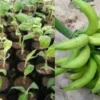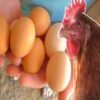- このトピックは空です。
- 投稿者投稿
- 3月 26, 2025 12:00 pm #607297

Growers mash is a critical feed for young chickens, specifically pullets, during their growth phase, typically from around 6 to 20 weeks of age.
Providing the right balance of nutrients during this period is essential for their healthy development, laying the foundation for good egg production later in life.
However, feed costs often represent a significant portion of poultry production expenses, making optimizing nutrient composition for cost-effective growers mash production a key concern for farmers.
This article explores the essential nutritional components of growers mash and strategies for achieving a balance between nutritional adequacy and affordability.
1. Understanding Pullet Nutrient Requirements
Pullets have specific nutritional needs that differ from chicks and laying hens. During the growth phase, they require adequate protein for muscle and tissue development, energy for growth and activity, and essential vitamins and minerals for bone formation and overall health.
Protein is particularly crucial, with recommendations typically ranging from 14-16% crude protein in growers mash. Energy, primarily from carbohydrates and fats, is also vital to support rapid growth. Key vitamins include Vitamin A, D3, E, and B-complex vitamins, while essential minerals include calcium, phosphorus, and trace minerals like zinc and manganese. Understanding these specific requirements is the foundation for formulating an effective growers mash.
2. Key Ingredients And Their Nutritional Contributions
Formulating a cost-effective growers mash involves carefully selecting and blending various feed ingredients based on their nutrient content and cost. Common ingredients include cereal grains like maize, which provide energy; protein sources such as soybean meal or fishmeal; and various byproducts like maize bran, which can contribute fiber and some nutrients.
Vegetable oils or fats may be added as an energy source. Vitamin and mineral premixes are often necessary to ensure the mash meets the birds’ micronutrient requirements.
The choice and proportion of these ingredients will significantly impact both the nutritional quality and the cost of the final product. Farmers need to consider the availability and price fluctuations of different ingredients in their local area.
3. Balancing Nutrient Levels For Optimal Growth
The goal of growers mash formulation is to provide the required nutrients in the right proportions to support optimal growth without overfeeding or creating nutrient imbalances. Insufficient protein or energy can lead to stunted growth and delayed sexual maturity, negatively impacting future egg production.
Conversely, excessive protein can be wasteful and may not necessarily lead to improved growth. Similarly, maintaining the correct calcium-to-phosphorus ratio is crucial for bone development. Formulating a balanced mash often involves using feed formulation software or consulting with animal nutritionists to ensure that the nutrient specifications are met while minimizing the inclusion of expensive ingredients.
4. Cost-Saving Strategies In Mash Formulation
Several strategies can be employed to reduce the cost of growers mash production without compromising the birds’ nutritional needs. One approach is to prioritize the use of locally available and affordable ingredients.
Exploring alternative protein sources, such as groundnut cake or cottonseed meal, if they are cheaper than soybean or fishmeal, can significantly lower costs, provided their nutrient content is accounted for and any potential anti-nutritional factors are addressed.
Utilizing appropriate levels of feed byproducts, like maize bran, can also reduce the reliance on more expensive grains. However, it’s crucial to ensure that these alternative ingredients and byproducts are of good quality and do not negatively impact the birds’ health or performance.
5. Importance Of Quality Control And Mixing
Even with a well-formulated recipe, proper quality control of raw ingredients and thorough mixing of the mash are essential for ensuring that the birds receive the intended nutrition. Poor quality ingredients, such as moldy grains or adulterated protein sources, can be detrimental to the birds’ health and reduce productivity.
Accurate weighing and thorough mixing of the ingredients are crucial to ensure that each bird consumes a balanced diet.
Inadequate mixing can lead to nutrient segregation, with some birds receiving too much of certain nutrients and others too little. Farmers should implement quality checks on their ingredients and ensure they have appropriate mixing equipment and procedures in place.
Optimizing the nutrient composition of growers mash is a balancing act between meeting the specific nutritional requirements of growing pullets and minimizing production costs.
By understanding the birds’ needs, carefully selecting and blending cost-effective ingredients, and ensuring proper quality control and mixing, farmers can produce a nutritionally adequate and affordable feed that supports healthy growth and lays the foundation for a productive laying flock.
This approach not only benefits the birds’ well-being but also enhances the economic sustainability of poultry farming.
Read Also: Agricultural Development in Nigeria
- 投稿者投稿
- このトピックに返信するにはログインが必要です。






